In 1837, 26 years before the end of slavery, a Quaker philanthropist founded the Institute for Colored Youth (now Cheyney University of Pennsylvania) to give the formerly enslaved access to education. More all-black universities were established after the Civil War, and were the only option for African Americans to gain higher education until the 1954 Supreme Court decision in Brown v. Board of Education ended “separate but equal” school systems. In 1965, the federal government officially designated historically black colleges and universities (HBCUs) to be eligible for federal funding, though they typically remain underfunded compared to historically white institutions.
Today, there are 105 HBCUs, mostly concentrated in the South. In 2010, President Obama signed an executive order “promoting excellence, innovation and sustainability” at HBCUs, which created the White House Initiative on HBCUs within the Department of Education. It is part of the goal to ensure the United States has the highest proportion of college graduates in the world by the year 2020. In September 2012, Obama also granted $228 million in grants to 97 HBCUs in 19 states.
As racial diversity is increasing at college campuses nationwide, so are the numbers of whites, Latinos and Asian Americans at HBCUs. Here are the experiences of three Asian Americans who attended HBCUs in search of a unique experience in higher education.
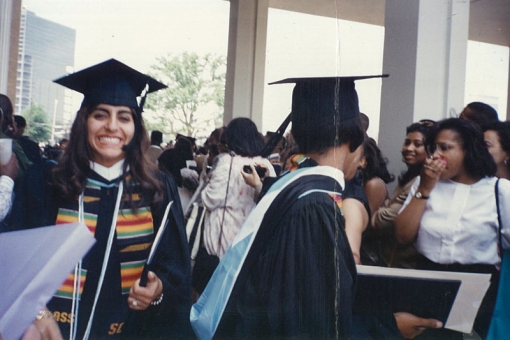
Kiran Ahuja on graduation day from Spelman.
Kiran Ahuja
Executive Director of the White House Initiative on Asian Americans and Pacific Islanders in Washington, DC
1993 Graduate of Spelman College in Atlanta
Growing up in Savannah in the ’80s, there were very few Asian
or Indian American families. My family immigrated to the United States
from India, so I knew from an early age that we were different. I grew
up among both African Americans and whites in communities that had
a complex political, social and economic history. I had to navigate this
dynamic, knowing I wasn’t a part of either community.
As an undergraduate, I transferred to Spelman College from Emory
University. There are several HBCUs in Atlanta, and when a close
friend who attended an HBCU suggested I transfer to one, my first
reaction was, “But I’m not black.” My friend encouraged me to be open
and educated me about HBCUs. I visited Spelman and loved the small
size, the professors and the focus on women. It’s a place where women
are nurtured and encouraged to be strong leaders.
At Spelman, I did not have a strong Asian American identity. I did
not grow up exposed to Indian culture or history, and I didn’t have any
concept of my Asian American identity in my teens or 20s. Looking
back now, I wish I’d been more connected to my culture. I would have
felt more grounded in who I was.
Because of its critical mission, Spelman focused on women and
made a special investment in women of color. I took classes about
African psychology, black women and leadership and African American
literature. I learned different history and culture narratives and learned
about the experience of people in this country that I had never known
before or had the opportunity to learn about.
I really appreciate the different spaces I was able to navigate because
of my experience at Spelman. After college, I spent time working
in the African American community in Georgia, which meant a lot of
time in black churches. I have very fond memories of that experience.
To celebrate the signing of the executive order on HBCUs, an HBCU
marching band performed in the East Wing of the White House. It took
me back to my Spelman days. I admit I got a little emotional.
Going to Spelman made us feel we could have a place in history.
It was a supportive environment and gave us self-confidence. I was
encouraged to read and have respect for different movements, cultures
and people. I truly believe that unless you expose yourself to
other communities, you don’t know why people react in certain ways.
My Spelman experience taught me that in order to build a more tolerant
community, you need to step outside your comfort zone.
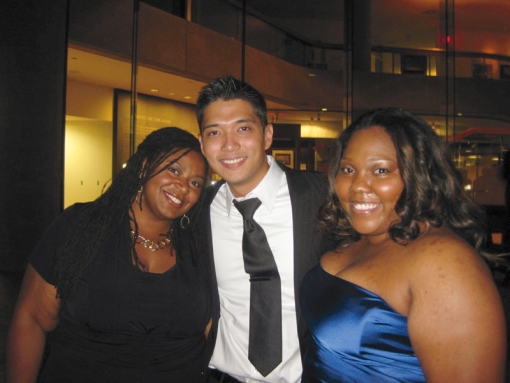
Brandon Mita with classmates celebrating the completion of law school at the Barrister’s Ball in 2010.
Brandon Mita
Lawyer in Chicago
2010 Graduate of Howard University
School of Law in Washington, DC
I grew up in the Chicago suburb of Skokie, IL, surrounded by a large
Asian American population and very few African Americans. As an undergraduate
at the University of Illinois, I was very involved with Asian
American advocacy and organizing. One year, I attended a Midwest
Asian American Student Union conference where Frank Wu spoke
about the civil rights issues facing Asian Americans. I was deeply impressed
by Wu’s speech, in which he also mentioned that he previously
taught at Howard Law School. This was the first time I had heard of the
school or considered attending an HBCU, but it stuck with me.
Going to Howard Law School was the best three years of my life.
Out of the 150 students in my year, maybe 15 or fewer were non-black,
and a handful were Asian American. Non-blacks, like me, were initially
looked at with a bit of skepticism: “So why are you here?” I tried hard to
integrate into the Howard culture, to make friends and network.
My close friends at Howard jokingly called me “Asian Malcolm.”
Looking back, I find the nickname endearing because it spoke to
the idea that I had somehow been accepted, and, at the same time,
showed that they acknowledged my reasons for being there − to learn
about how communities of color can collaborate within various legal
frameworks.
Though there are plenty of attorneys who are Japanese American,
as well as Japanese Americans who hold positions of power, the Asian
American community is still evolving. In terms of civil rights and social
justice, who better to learn from than the African American community?
For example, cases of racial discrimination in housing and employment
are brought overwhelmingly by African Americans. In order to push
forward with an Asian American agenda, it makes the most sense
to build coalitions with African American issues. They are the same
issues, attempting to coexist in the same space.
It’s a generalization, but I think Asian Americans or Japanese
Americans tend to be shyer and less confrontational, or have a lack of
communication. At school, I remember one time getting into a yelling
match; we really had it out in public. I had never experienced that before.
That outwardness of my peers forced me to be more outspoken.
One time, I was at The Gap with a group of friends who were all black
men. I noticed we were being followed around the store. It shocked
me when several said it was not the first time this had happened. The
underlying, unspoken racial profiling exhibited toward my friends was
normal to them. The motto of the school comes from its former Dean of
Students and civil rights leader Charles Hamilton Houston: “A lawyer’s
either a social engineer or he’s a parasite on society.” I took those
words to heart when I sat down to write a letter to the store demanding
an apology.
Various aspects of civil rights were always touched on in the Howard curriculum. Howard’s legacy of students and faculty
include Thurgood Marshall and other brilliant African American civil
rights leaders. Going to a law school with a rich history rooted in the
civil rights mission was an invaluable experience.
My advice for anyone interested in attending Howard Law School
is to go with an open mind. Try to understand the reasons why you’re
going and be sure to establish yourself there. Lastly, be sure to eat in
the Howard Law cafeteria. It’s the place where I learned to love soul
food and Caribbean cuisine.
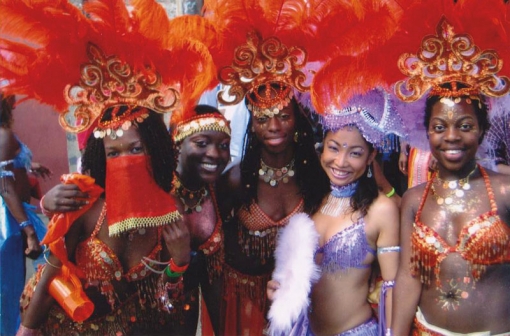
Nao Ayabe at the Trinidad Carnival in 2005.
Nao Ayabe
8th Grade Special Education Teacher in Atlanta
2001 Graduate of Spelman College in Atlanta
I was born in Yokohama, Japan, and lived in Japan through high
school. I wasn’t a great student, and in Japan, if you don’t go to a good
high school or do really well, then you don’t get into a good college,
either.
During a family vacation to the United States when I was 19, an
issue of Ebony magazine caught my eye on the newsstand at San
Francisco’s airport. I read about Spelman College, and it sparked my
interest. I was compelled by the idea of learning a new history and that
it was a women’s college. In Japan, I never had the chance to study
African or African American history, and I had never heard of an HBCU
before.
At Spelman, expectations were very high, and I had to work really
hard. But I always felt welcomed. I became a tutor for the Japanese
history and culture classes, and I was also in the Japanese Student
Association. Some of my friends joined too, even though they weren’t
Japanese. Every year there was an exchange student from Japan.
Most of my friends at Spelman were from Trinidad and Tobago; we
met at the orientation for international students. During my freshman
year break, some of them invited me to go back to Trinidad and Tobago,
since it is only a five-hour flight from Atlanta and Japan is so much
further. I kept getting invited back for all of the holidays with different
friends. At this point, I have visited seven or eight times. Before
Spelman, I didn’t know anything about Trinidad and Tobago, but now I
feel like it’s a home away from home.
People have different opinions, and I had to learn how to express
mine in a way that made sense to others. At first, I struggled. For
example, if I loaned someone money, I would have to ask for it back and
not expect them to remember. I wasn’t used to having to ask for it. It
was more than just a language barrier; it’s communication. I didn’t know
how to be straightforward. Culturally I think Asians favor harmony. We
feel like we have to agree with everything, and we try not to argue. It’s
hard for Japanese people to say no, but I had to learn to communicate
better.
I learned that my common sense is not everyone else’s common
sense; other students didn’t grow up like I did. Most of the students at
Spelman are middle or upper class. In Japan, I never knew about class
differences. I learned that I couldn’t be judgmental because everyone’s
experiences are different, and so people’s standards are different, too.
For many people I meet in Atlanta, I am the first Japanese person
they have ever known. I am a special education teacher at a middle
school now, and for most of them, I’m the first Japanese teacher
they’ve had. My experience at Spelman has really helped me connect
with my students and their parents.
Nicole Wong is Hyphen's senior editor.








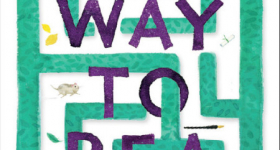
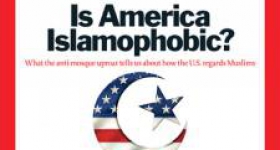
Comments